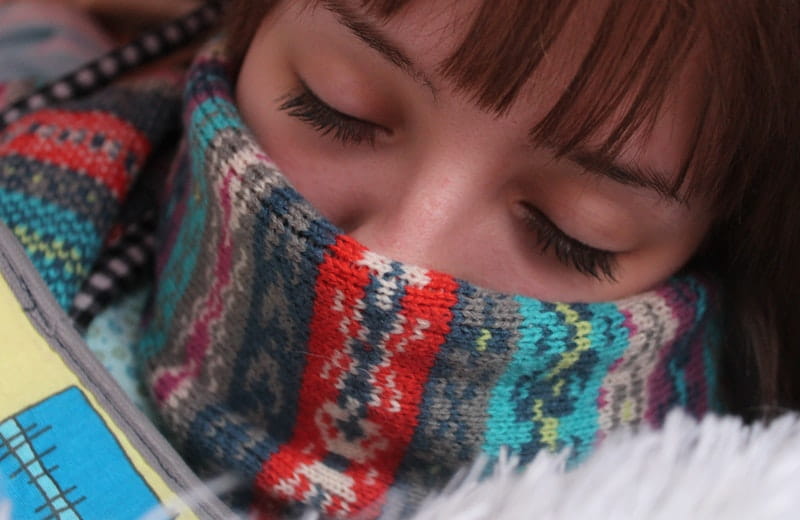An abscess is not a disease, but a condition where a mass founds in a certain area of the body. The mass, or area, is often discolored and easy to see. They are typically caused by some sort of infection. Inside of that mass, it is full of debris, pus and bacteria.
An abscess can occur anywhere in your body. The most common sites on your skin where abscesses occur are at the base of your spine, groin, and teeth. Another type of abscess includes inflammation around your hair follicle. The inflammation leads to what is called a boil.

An abscess normally starts when normal, healthy skin breaks. The break can happened because of a minor trauma, inflammation or small tears. Germs enter your body. Your body tries to fight the germs that enter through the broken skin with your inflammatory response. Your inflammatory response, or white blood cells, create the pus that forms under the mass.
1. Painful, swollen lumps
Lumps can develop anywhere in your body. They are typically harmless because they are not a disease. They are a sign of a medical condition such as an abscess. The lumps are soft to the touch and. You may be able to move the lump around with your finger. They may be the size a pea. It often develops because of trauma to a specific area of skin. It may also be painful, whether you touch the area or not. The swollen lumps may be reddish or pink in color.
2. Pus filled lumps
Pus filled lumps are located under the skin. The lumps have pus inside them. They may be painful or tender to the touch. The pus may have to be drained to treat the lump. Pus filled lumps may have debris and bacteria inside them too. The lumps are not a disease, but is a sign of an underlying symptom.
3. Chills
It is normal to feel suddenly cold sometimes because you enter into a cold environment or for no particular reason. You may feel excessively cold, regardless of whether you wrap yourself in additional blankets or wear warm clothing. However, the condition, which is not a disease, may indicate you have symptoms of an abscess. Chills are described as feeling cold while shivering. You may have this condition with or without a fever. You may experience other symptoms of this condition if you have the flu, certain cancers or hypothermia. These signs may include prolonged exposure to the cold, infection and increased body temperature.
4. Fever
Fevers occurs when your body temperature that is higher than normal. It occurs because of your body’s attempt to fight an infection. Normal body temperature is 98.6 degrees. It occur in your hypothalamus, an area of your brain. It is called your body’s thermostat because it shifts your body temperature up and down. You may experience symptoms like aches, headache, lack of energy, shivering and an elevated temperature. Your skin may also be a sign of a high temperature. Fevers are caused by bacterial infections, viruses and specific inflammatory conditions. Fevers typically decrease in about three days.
5. Pimples
Small holes in your skin, called pores, are connected to oil glands under your skin. The glands make sebum, an oily substance. The small holes are connected to canals known as follicles. The follicles carry dead skin cells. The sebum transport the dead skin cells and bacteria to your skin’s surface. This causes pimples to occur. Symptoms include pus-filled, painful lumps under your skin. Small tender, red bumps. The pimples may be tiny and either red or black in color. Pimples are a medical condition called acne. However, it may be a sign of an underlying condition like an abscess. Treatment for pimples depend on the underlying cause.
6. Redness
Redness on your skin occurs when it turns a reddish in color regardless of your skin’s complexion. This symptom of a medical condition is not a disease by itself. It develops for many reasons ranging from sunburn and allergic reason to abscess. One sign of redness includes irritation of your skin. The redress may occur because of extra blood that rushed to the skin’s surface to that particular area of the skin to fight the irritant. The extra blood tries to start the healing process on your skin and eliminate the redness. Treatment to eliminate the redness depends on the underlying cause of your medical condition.
7. Tenderness
Tenderness on your skin refers to feeling discomfort when the area is touched. It may or may not be painful. However, the sensation may feel like your skin is burning or not firm in appearance. Tenderness is a sign of a medical condition or disease. It may accompany other symptoms depending on the reason why the discomfort occurs. For instances, you may experience bumps, lumps, swelling and inflammation. The area of the skin may have pus or bacteria underneath your skin.
8. Swelling
Swelling occurs when your skin becomes enlarged because of the buildup of fluid or inflammation. The swelling can happen on the outer part of your skin or muscles or to your internal organs. This can occur because of damage to the skin such as a break in the skin, insect bite, illness or injury. Internal swelling happens because of a side effect of medication. Symptoms that sometimes occur because of the enlarged skin are vomiting, gas, itching or pain. The treatment for the condition depends on what is causing the irritation. Some common treatments include over-the-counter medications and topical creams.